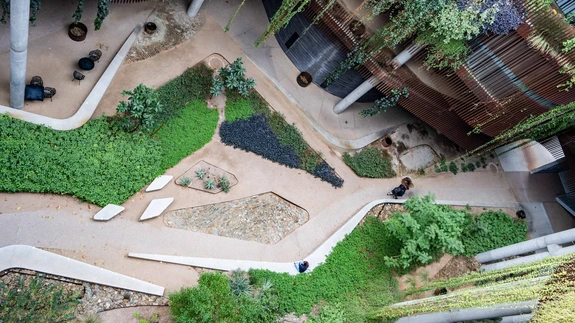
ABOUT THE SCHOOL
Who We Are
We offer undergraduate degrees in Geography, Urban and Regional Development, Environmental Studies, and Geographic Information Systems Technology (GIST) and graduate degrees in Geography, GIST, and Development Practice.
The research interests of our 30 faculty include a wide range of topics in contemporary geography, development and environment including climate and environmental change, urban and economic development, land use, population and migration, social theory, spatial analysis, and issues of environmental and social justice. Geography has been taught at the University of Arizona since 1892, with the first B.A. degree specifically in geography awarded in 1961 and the Ph.D. in 1977.
The University of Arizona is a leading research university and Hispanic Serving Institution. We are located in the vibrant city of Tucson in the Sonoran Desert, near the Mexican border. Current enrollment includes about 36,000 undergraduate and 10,000 graduate students, including about 5,000 students online, 41% students of color, and 4,000 who are international.
Why study and work with us?
The degrees we offer – in geography, GIS, development, and environmental studies – address some of the greatest challenges of our time including climate change, water and food access and security, urban development and economic and social inequality, international connections, migration patterns, and environmental and social justice. The skills we offer in spatial analysis, geographic information systems, social and environmental field techniques, and critical methodology are useful across a wide range of careers and in understanding a changing world.
Our faculty and students are engaged with programs across the university such as:
- Udall Center for Studies in Public Policy
- School of Government and Public Policy
- Rogers College of Law
- Latin American Studies
- Mexican American Studies
- American Indian Studies
- Gender and Women’s Studies
- Mel and Enid Zuckerman School of Public Health
- Laboratory of Tree Ring Research
- Biosphere 2
- Arizona Institute for Resilient Environment and Societies
Faculty in many of these programs have affiliations with our School. We are dedicated to collaborating beyond the university – with colleagues elsewhere and with our local community – including with international scientific efforts in climate change adaptation and water security, immigration, urban policy, community and school gardens among others. The University of Arizona prides itself on its interdisciplinarity – students find relevant courses across many departments and faculty collaborate across many different units on topics such as global change or poverty alleviation.
Students in our degree programs join about 400 undergraduate majors and about 100 graduate students who study in the stunning and sustainable Environmental and Natural Resources Building (ENR2) close to the center of campus. Designed to mimic the slot canyons of the southwest U.S., with terraces and native plants, the building has LEED platinum status because of its low energy and water use features and use of sustainable building materials.
The great success of our faculty in obtaining funding for their research brings distinction to the School and means that students are able to work on exciting research projects during their time with us. Many of our students win their own awards and scholarships.
Our graduates go into many different careers. For example, undergraduates find work in real estate, local government, environmental organizations, or go on for advanced degrees in planning, law, geography or environment. Many of our PhD students go on to become faculty at leading universities, others choose to work internationally as development practitioners, data analysts for business and government, or as researchers in community organizations.
The University and the School are committed to fostering a diverse and inclusive learning and research community as described in our statement on diversity, equity and inclusion. We also align with the University of Arizona’s values of integrity, compassion, exploration, adaptation, inclusion and determination.
Why the University of Arizona?
The University of Arizona is a premier research university known internationally for its commitment to education, research, and community impact. As a public, land-grant institution, the University provides an accessible and inviting environment for discovery and learning.
Learn more about the University of Arizona.
Why Tucson?
Tucson consistently ranks among the best cities to live in, especially for young professionals. The Old Pueblo invariably bucks Arizona stereotypes and offers a vibrant cultural, music, and culinary scene, with spectacular landscapes and among the lowest costs for U.S. cities of a million people.
Learn more at Visit Tucson.

